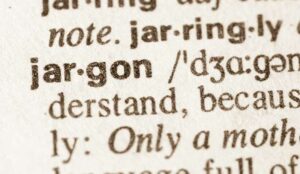Call transfers are a common frustration in contact centres, for both agents and customers. They slow things down, break the flow of the conversation, and often lead to repeat explanations.
To find out how contact centres can optimize and reduce call transfers, we asked John Ortiz, Technology Sales Manager at MiaRec, to explain how topic analysis and smooth processes can help.
Video: Optimize and Reduce Call Transfers: Topic Analysis and Smooth Processes
Watch the video below to hear John outline how to optimize and reduce call transfers by using topic analysis and smooth processes:
With thanks to John Ortiz, Technology Sales Manager at MiaRec, for contributing to this video.
This video was originally published in our article ‘Need to Reduce Call Transfers? Try These Approaches’
Two Tips to Reduce and Improve Call Transfers
1. Use Voice Analytics to Spot the Problem
Voice analytics tools, especially Topic Analysis, can help you identify where and why call transfers are happening.
These tools automatically scan conversations and group them into categories based on keywords and phrases, and with all transfer-related calls in one place, it becomes easy to review them and understand the root cause.
“One surefire way you can help with reducing the number of transfers in your contact centre is by using voice analytics, specifically Topic Analysis.
Topic Analysis can categorize and organize all your calls based on the language used in the call.
For example, if someone says something like, “let me speak to your manager” or “transfer me”, topic analysis will identify those as “Transfer Calls”.
Now that you have all your transfer calls organized in one place, you can easily go back and review those calls to identify the reason why a transfer was necessary.”
2. Train Agents to Close Knowledge Gaps
Often, transfers happen because the first agent doesn’t have the knowledge or tools to resolve the issue.
Once you’ve identified the calls where this is the case, go back and listen, pinpoint what the agent didn’t know, and then provide training.
A well-trained team is your best defence against unnecessary transfers, and the more confident your agents are, the more problems they can solve first time.
“Usually, it’s a lack of agent knowledge that leads to a transfer. Go back, listen to the calls, identify what the agent didn’t know, and train the agents on this topic. A well trained staff is your best weapon against a high number of call transfers.”
When Transfers Are Necessary, Do Them Right
Sometimes, a transfer really is the best option, and in those cases, there are three things you must get right to keep the process smooth and customer-friendly:
Effective Communication Between Agents
“Number one is effective communication between agents. This is key. Make sure the first agent explains the scenario, and what actions have been taken so far ,to the receiving agent.
If the receiving agent doesn’t know what’s going on when they get the call, they’re going to have to start from square one with the customer, which surely going to lead to customer frustration”
The first agent must clearly explain the issue and actions taken so far to the receiving agent. If not, the caller will have to repeat themselves — which can be very frustrating.
Transfer to the Right Person
“Number two is transfer the call to the most appropriate agent or department. Whatever you do make sure your agents aren’t just transferring someone to transfer them, they must send the caller to the most appropriate agent based upon the circumstances.
Now having skill-based routing technology can help you with this, but if you don’t have that that’s okay, just make sure there are proper transfer protocols in place.”
Make sure the call is going to the most suitable agent or department. Agents should never transfer a caller just to get them off the line. If you have skill-based routing, use it. If not, set clear transfer protocols.
Set Clear Expectations With the Caller
“Number three is the transferring agent needs to set clear expectations for the caller. Tell the caller about the transfer process, including any potential wait times. Keeping customers informed helps manage their expectations and reduce frustration.”
Let the customer know what’s happening, tell them who they’re being transferred to and if there might be a wait. This helps manage expectations and reduce anxiety or irritation.
If you are looking for more great insights from the experts, check out these next:
- How to Improve Agent Consistency with Analytics
- Digital Literacy: How to Train Agents to Work Alongside AI Tools
- How Customer Attitudes to AI in Customer Service Are Changing
- Q&A – What’s Holding Women Back in Their CX Careers?
Author: Robyn Coppell
Reviewed by: Jo Robinson
Published On: 29th May 2025 - Last modified: 25th Sep 2025
Read more about - Video, Call Handling, Call Routing, John Ortiz, MiaRec, Videos















